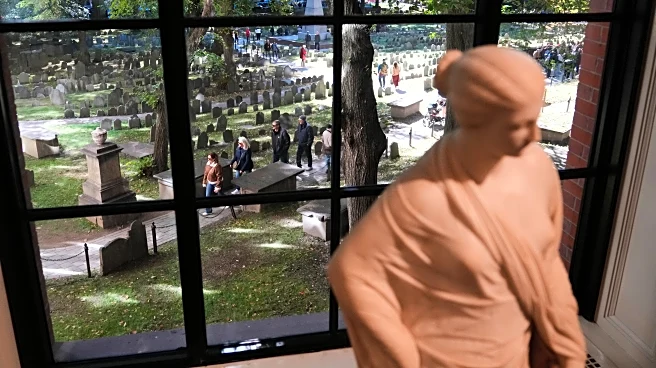What's Happening?
Historic libraries in New England, such as the Boston Athenaeum, are providing modern comforts while preserving their rich heritage. These institutions, known as athenaeums, date back to the 18th and 19th centuries and were originally established by merchants,
doctors, and other professionals to create spaces for reading and cultural exploration. The Boston Athenaeum, adjacent to Boston Common, houses over half a million books, many of which are centuries old. Visitors can explore rare collections, including George Washington's personal library, and participate in cultural discussions and events. The Providence Athenaeum in Rhode Island similarly offers a unique experience with its Greek temple-inspired architecture and extensive book collections.
Why It's Important?
These historic libraries play a vital role in their communities by preserving cultural heritage and promoting literacy. They offer a unique blend of historical artifacts and modern amenities, attracting book lovers and history enthusiasts alike. By providing access to rare collections and hosting cultural events, these institutions contribute to the educational and cultural fabric of their communities. They also serve as safe havens for individuals seeking a peaceful environment to read, work, or socialize, thus fostering community engagement and intellectual growth.
What's Next?
The continued preservation and modernization of these libraries are crucial for maintaining their relevance and accessibility. Efforts to acquire and showcase works by overlooked modern creatives, such as painter Allan Rohan Crite, highlight the libraries' commitment to inclusivity and cultural diversity. As these institutions evolve, they may expand their offerings to attract a broader audience, potentially increasing membership and community involvement. The libraries' ability to adapt while preserving their historical significance will determine their future impact on society.
Beyond the Headlines
The transformation of these libraries from exclusive spaces to more accessible public venues reflects broader societal shifts towards inclusivity and democratization of knowledge. By offering memberships and day passes, these institutions are breaking down barriers to access, allowing a wider audience to experience their cultural and historical treasures. This shift not only enhances community engagement but also challenges traditional notions of exclusivity in cultural institutions.















